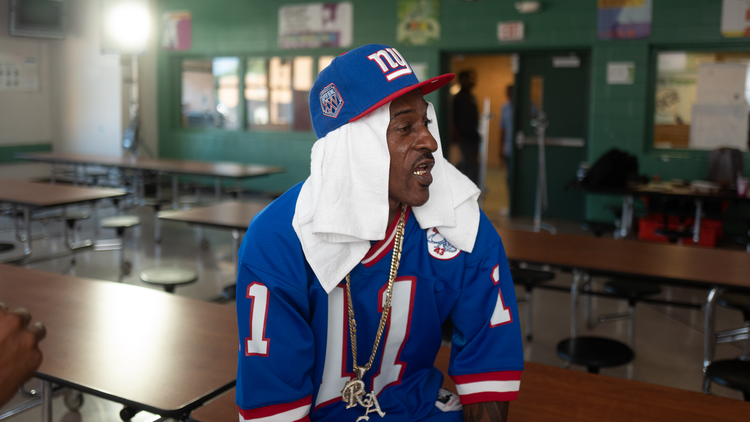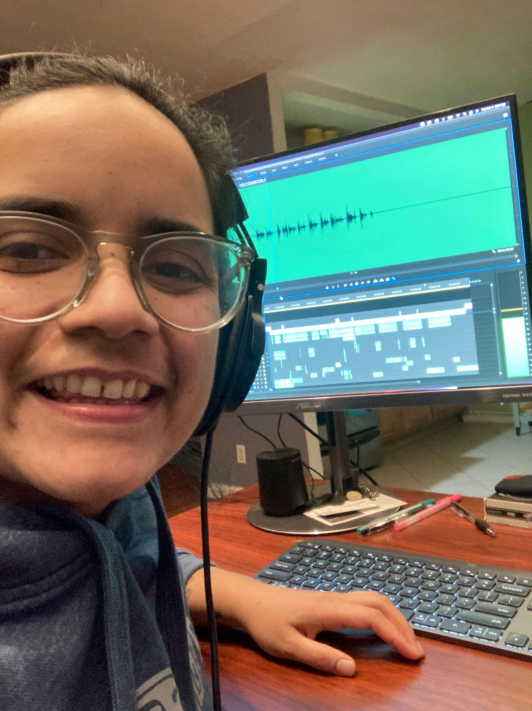Filmmakers Jason Pollard and Alma Herrera-Pazmino edit Tribeca’s “All Up in the Biz” with Adobe Premiere Pro

Biz Markie, a beloved hip-hop icon and New York native, was a multi-talented artist known for his skills as a rapper, beatboxer, songwriter, and producer. Fondly referred to as the clown prince of hip-hop, his influence on the music industry is undeniable. Sacha Jenkins, the director of the documentary “All Up in the Biz”, beautifully weaves together a collage of dynamic celebrity interviews, rare archival footage, reenactments with puppets, and playful animation to share the personal and professional story of Biz Markie and the impact he made on hip-hop history and the music industry worldwide.
Behind the scenes, editors Jason Pollard and Alma Herrera-Pazmino used Adobe Premiere Pro, a trusted tool they have used on previous projects. With Premiere Pro’s intuitive features, they were able to shape the narrative and create a visually captivating film that pays homage to Biz Markie’s influence.
“All Up in the Biz” is set to have its world premiere at the 2023 Tribeca Festival on June 17th. Read on below to hear more from the editors about their use of Adobe’s tools.
Can you tell us about your experience as a filmmaker and how you got started in the industry?
Pollard: I got started in the industry thanks to my dad who has been a filmmaker for over 50 years. I used to go with him to the editing room back when editors cut on flatbed machines and watch him and other editors work with film which was exciting and intimidating. Once I got to college, I thought I wanted to do computer science, but decided to do film when I realized that was my true passion. My experience as a filmmaker has had a lot of ups and downs, more ups than downs to be sure, but I am happy to have chosen this career and am grateful to have done it.
Herrera-Pazmino: After college I knew I wanted to work with stories. My interest grew from the youth development organizations I grew up in that taught me to think critically about my civic role through writing and performance. As a pipeline baby who was a participant growing up and became a staff member being prepared for a leadership position in the non-profit space, I was determined to come back and serve these organizations after my undergraduate studies at UC Santa Cruz. As fulfilling as the work was, I knew I wanted to work in film after having taken a communications class during my study abroad experience at the Universitat de Filologia in Barcelona, Spain. I started as a freelance filmmaker in San Francisco after taking night classes at San Francisco’s City College in the cinema department. I transitioned out of my non-profit administration work once I was able to buy a Sony a7ii to start shooting journalistic videos for El Tecolote, music videos for my brother who is a rapper and bay area small businesses. As I learned on the job I knew that I wanted to go the apprentice route to become knowledgeable in the area of filmmaking that drew me in the most: editing. After a few gigs in the bay area as an assistant editor while working three jobs I decided to take the risk and move to New York for more work opportunities in the edit room. My first feature documentary job as an assistant editor was on Barbara Kopple’s “Desert One” (Tiff 2019). Since then I have been growing as an editor through the support of mentors I met through the Karen Schmeer Diversity in the Edit Room like Francisco Bello, Jason Pollard and Flavia Souza and through the Sundance Art of the Edit Fellowship with Sonia Gonzales-Martinez.
How and where did you first learn to edit?
Pollard: I learned to edit using tutorial/sample projects. There was one about a canoe and one that was a western. These projects allowed me to learn the basics of Avid and editing. My dad also gave me a lot of advice about editing.
Herrera-Pazmino: I first learned to edit in my film class at the Universitat de Filologia of Barçelona. I learned how to use Premiere Pro and After Effects in Spanish and worked on my own personal narrative projects.
How do you begin a project/set up your workspace?
Pollard: I have my personal workspace settings saved in Premiere. I have pretty much used the same settings through the many years/versions of Premiere Pro.
Herrera-Pazmino: Before starting a project I make sure that all my assets are within their appropriate folders in the drives I’ll be using. I have three main root folders 1. Project; 2. Assets; 3. Exports. Depending on the project I may have different sub folders. I like to have bins separated by date and additional themes. Once there's an initial ingestion I like to make sure the assets have their metadata either batch inserted or placed manually in the metadata panel to be able to make smart bins by theme later on. My preference is to work in Assembly mode for the initial pass of notes and selects and then move into the edit layout.
Tell us about a favorite scene or moment from this project and why it stands out to you.
Pollard: My favorite scene from the film is when Erick Sermon talks about seeing Biz Markie at an IHOP (International House of Pancakes) and Biz Markie dissed him because he was an unknown artist at the time. There is something so uniquely hip-hop about this story that it delights me every time I see it. Also we were lucky to find old footage of Biz in high school dancing which was exhilarating to see.
Herrera-Pazmino: One of my favorite scenes on this project is where we start to understand Biz as a traveling artist. It’s a great combination of archival, interviews and graphics that articulates the distance he was willing to go to become an artist and also connect with other artists. I think it paints the picture of what role he played as a connector of hip hop and how enormous New York is.
What were some specific post-production challenges you faced that were unique to your project? How did you go about solving them?
Pollard: We had some issues converting footage but we were able to resolve them by re-importing older footage into our systems.
Herrera-Pazmino: The most challenging part of this project was working on the cloud system we used. There were some bumps along the road with transcoding the large original camera media but as a team we were able to find some solutions with our local machines.
What Adobe tools did you use on this project and why did you originally choose them? Why were they the best choice for this project?
Pollard: We used Premiere Pro on this project. It was the best choice because I have used Premiere with this production company (Mass Appeal) for other films and it has always gone well.
Herrera-Pazmino: Premiere Pro, this is the software used at Mass Appeal for all projects.
Do you use Frame.io as part of your workflow? If so, how do you use it and why did you choose it?
Pollard: We did not use Frame.io for our workflow, but I have used it before and find it a great way to collaborate with directors, producers and other editors.
If you could share one tip about Premiere Pro, what would it be?
Pollard: Make sure to have your keyboard shortcuts down and saved. My keyboard shortcuts have saved me a lot of time when making edits.
Herrera-Pazmino: Don’t sleep on the metadata. Smart bins and text are your friends.
Who is your creative inspiration and why?
Pollard: My creative inspiration is my dad Sam Pollard.
Herrera-Pazmino: I have many creative inspirations when it comes to my work in film. I’ll share that my first inspiration in film is Vero Majano, a San Francisco based filmmaker and archivist that made the film where I first saw myself reflected on the screen with her short “Calle Chula”. Poetry on screen. This set in motion my vision for visual storytelling.
What’s the toughest thing you’ve had to face in your career and how did you overcome it? What advice do you have for aspiring filmmakers or content creators?
Pollard: The toughest thing I’ve had to face in my career was re-cutting a pilot episode for a documentary tv show in a ridiculously short amount of time. It was super stressful, but I was able to overcome it by collaborating with three superstar additional/junior editors and we were able to delegate the work and collaborate in a way that got the job done well. My advice for aspiring filmmakers is to not be afraid to ask for help from your filmmaking community. We can’t go it alone and we all need help and support for all our projects.
Herrera-Pazmino: Imposter syndrome. I’ve heard that imposter syndrome is self imposed but I think it is a product of colonization and racist policies and institutions that make opportunities to have a role in telling a story to a mass audience inequitable to people like myself. Opportunities to have mentorship and talk about the inequities and things that happen in the shadows of the industry have helped me strategies how to move forward in an industry that was not designed for me to succeed in. For anyone interested in making films or creating content I would advise them to make sure they work on setting healthy boundaries that allow them to have a healthy work life balance and to believe in their “why” for what their purpose in life is.
Share a photo of where you work. What’s your favorite thing about your workspace and why?
Pollard: I don’t have a photo of my workspace, but my favorite thing about my workspace is the comfort and freedom of working from home.
Herrera-Pazmino: My favorite thing is that my kitchen is a few steps away

Image source: Alma Herrera-Pazmino All Up in the Biz co-editor.